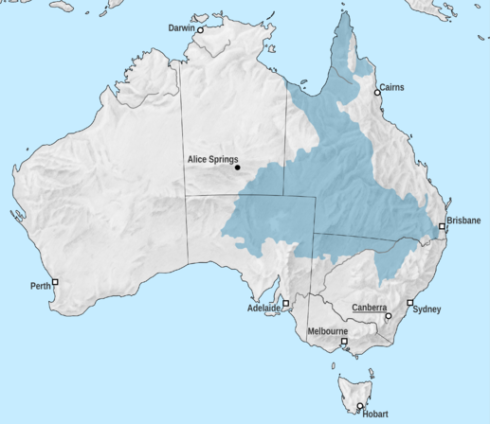Could Australian Terrain Help Train Future Mars Explorers?


How do you rehearse for a Martian space trip? Simulations can only bring astronauts so far when they’re figuring out a mission. A typical person training for the International Space Station can expect a combination of classroom work, spacewalk rehearsals in the water, and robotic arm training using articles that are very close to the real deal.
Exploring another world is a complex problem yet again. Astronauts in the Apollo mission received hundreds of hours in geology training, for example, and flew to areas ranging from Meteor Crater in Arizona to the site of a huge crater in Sudbury, Ont. Today, NASA and other research institutions carry out Mars mission research at two Mars Society sites in Canada and Utah, among other locations.
Turns out Australia’s challenging environment could also be a good analog for the Red Planet. The Great Artesian Basin, which stretches across much of the east side of the continent, is the site of “acidic weathering” that could be similar to what was experienced on Mars, a new study says. Perhaps future Martian trainees could add Australia to their list of destinations.

The tough environment has an economic link to Australia: precious opals, the national gemstone of the country. The May 2013 paper in the Australian Journal of Earth Sciences suggests not only a way that opals form.
There’s a bit of a mystery behind opal formation, which Markus Hammonds documented in a past Australian Science article. Also, their formation could point to similarities to the Red Planet.
“Interestingly, acidic oxidative weathering has been documented at the surface of Mars, which shares an intriguing set of attributes with the Great Artesian Basin,” stated the scientific paper.
These characteristics include sandstones that appear very similar between the locations, a “drying out” period that created clay and opaline silica, and even a similar red color, the paper noted. The opals themselves were formed after the acidic weathering dried out the landscape amid the Eromanga Sea receding about 100 million years ago.

So what are the implications of this link between Australia and Mars?
It could help us better understand geological features. Rovers on Mars keep stumbling across evidence of minerals that formed in water, “including opal-bearing mineral assemblages”, the paper noted. Research on the Red Planet is thus helping us to better understand how opal formed in Australia, it added, and how the area was dehydrated during the Late Cretaceous.
It could teach us more about each planet’s history. Both areas are very red, suggesting that “oxidative weathering played an important role during and after the dehydration of Mars’ surface”, the paper stated. From a wider perspective, comparative planetology between Mars and Earth could help us understand how a planet can lose much of its atmosphere (as Mars did) or hang on to it (as Earth has, so far.)
Australia could be a good training ground for budding Martian scientists. This finding has already generated a lot of interest in the greater space community (it was picked up by a NASA astrobiology publication, for example) and will likely bring about more research into the links. This could potentially bring Australia to more prominence as a potential training ground for Mars exploration. Geologists could train for searching on Mars by searching in the Great Artesian Basin.
Human Mars exploration is likely still years away, but at the very least, Australia could be a spot where technology is tested out and Martian geological exploration is simulated. The Mars Society has talked about putting in a “Mars-OZ” base in Australia, for example.
There are substantial risks to the journey — this Australian Science article by Sharon Harnett explains more about the hazards associated with radiation and cardiovascular damage, among other risks. There’s a lot we need to figure out. But as more findings like this recent one are released, interest in Australia as an analog environment is bound to increase.
Howell E (2013-07-08 00:01:32). Could Australian Terrain Help Train Future Mars Explorers?. Australian Science. Retrieved: Dec 13, 2025, from https://ozscience.com/space/could-australian-terrain-help-train-future-mars-explorers/
 Follow
Follow
1 thought on “Could Australian Terrain Help Train Future Mars Explorers?”
Comments are closed.